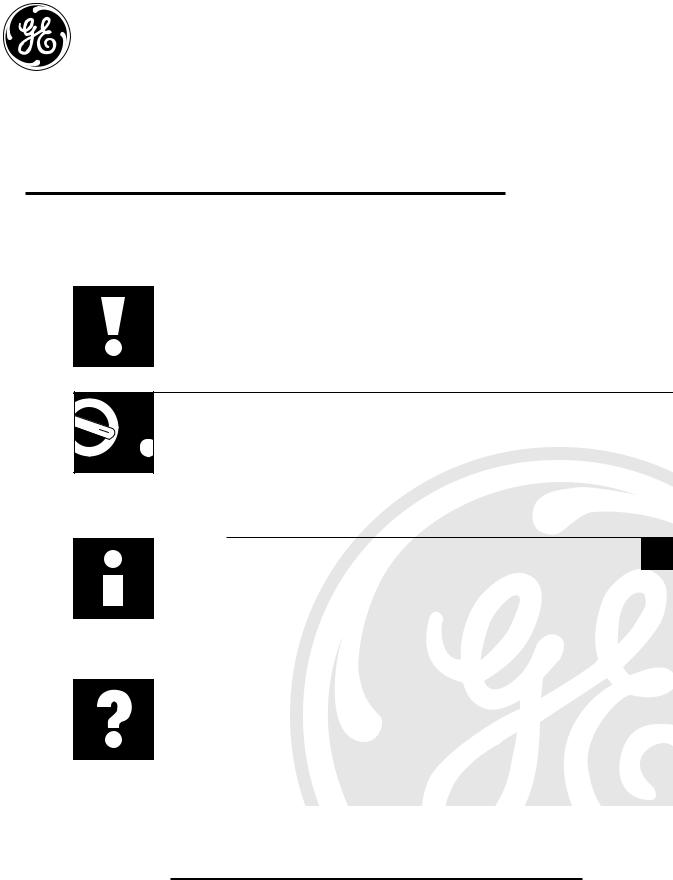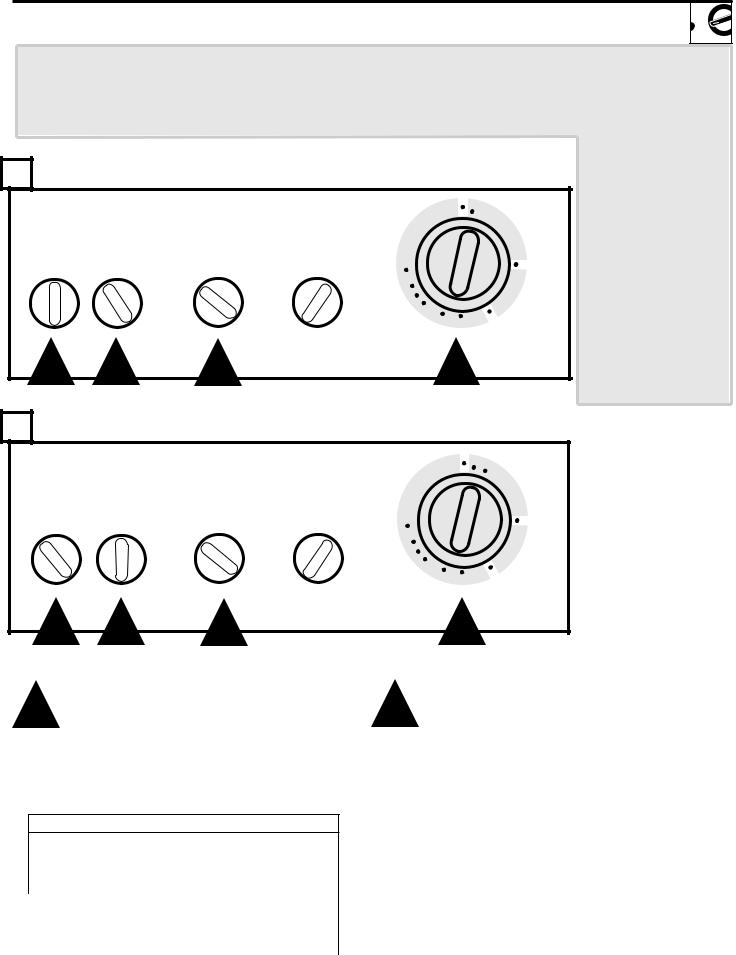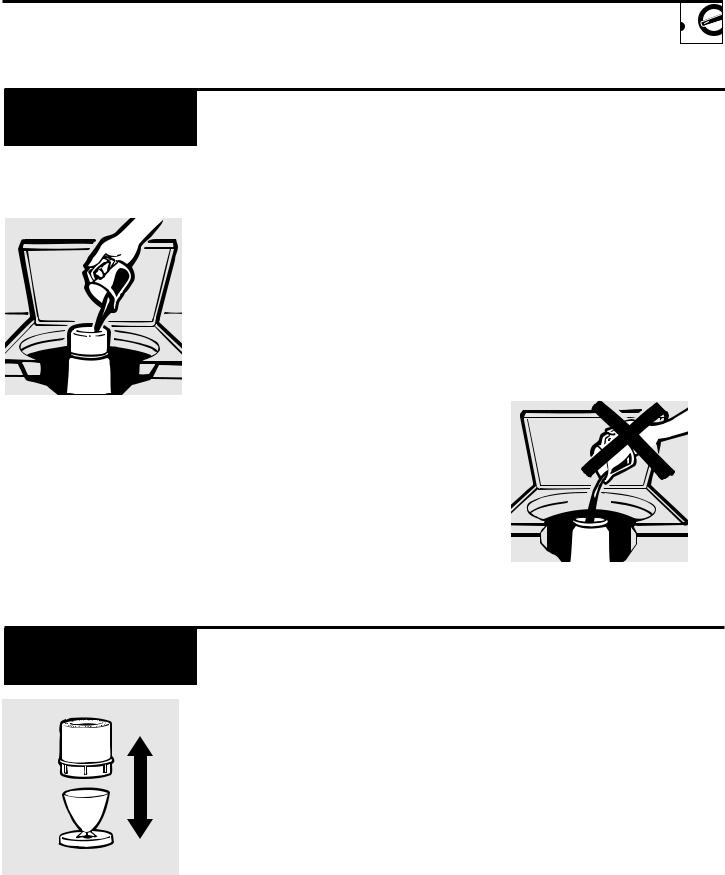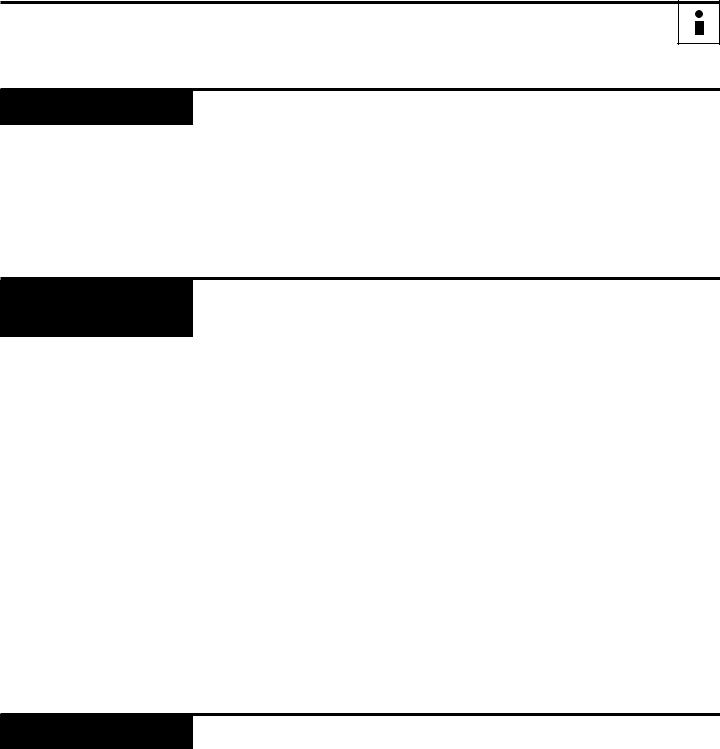GE GCXR2080, GJSR2080, GJXR2080, GNSR2090, GNSR3100 Owner’s Manual
...
Models: GCXR2080 |
GJSR2080 |
GJXR2080 |
GNSR2090 |
GNSR3100 |
GUSR2080 |
Washer
Owner’s Manual
Important Safety Information |
3 |
Operating Instructions |
6 |
The Controls on Your Washer
Other Washer Features
Preparing to Wash
Care of Product
Helpful Information |
12 |
Specialized Fabric Guide
Stain Removal Guide
Removing Specific Stains
|
|
|
If Something Goes Wrong |
16 |
|
Before You Call For Service
Camco Service Numbers
Warranty
GE Appliances
175D1807P233 49-9962
11-97
CPrinted in the United States

Welcome
Welcome to the Moffat family. We’re proud of our quality products and we believe in dependable service. You’ll see it in this easy-to- use manual and you’ll hear it in the friendly voices of our customer service department.
Best of all, you’ll experience these values each time you do the laundry. That’s important, because your new washer will be
part of your family for a long time.
Start Here!
Before using your washer
Staple your receipt to the inside back |
Write down the model and serial |
||
cover of this manual. |
numbers here. They are behind |
||
|
the top edge of the control panel. |
||
Find your model. Put a check mark |
|
|
|
|
|
|
|
in the box identifying your model |
|
|
|
in the section titled, “Operating |
|
|
|
Instructions.” This will provide |
|
|
|
easy access for your operating |
|
|
|
instructions. |
|
|
|
|
|
|
|
|
|
|
|
Model number
Serial number
Date of purchase
Need Help? |
Before you call for service, |
|
there are a few things you can |
|
|
Help us |
do to help us serve you better. |
|
Read this manual. It contains help you instructions to help you use and 800-361-3400 maintain your washer properly.
Save time and money. Check the section titled “If Something Goes Wrong” before calling. This section was designed to solve common problems you might encounter.
If you do need service, you can relax knowing help is only a phone call away. Call toll-free 800-361-3400.
2

Important Safety Information
Read all safety information before using
Many washers are located near a gas dryer or a water heater in the home.
 WARNING: For your safety the information in this manual must be followed to minimize the risk of fire or explosion or to prevent property damage, personal injury or loss of life.
WARNING: For your safety the information in this manual must be followed to minimize the risk of fire or explosion or to prevent property damage, personal injury or loss of life.
Do not store or use gasoline or other flammable vapors and liquids in the vicinity of this or any other appliance.
Installation and service must be performed by a qualified installer, service agency or the gas supplier.
IF YOU SMELL GAS
1Do not try to light any appliance.
2Do not touch any electrical switch; do not use any phone in your building.
3Clear the room, building or area of all occupants.
4Immediately call your gas supplier from a neighbor’s phone. Follow the gas supplier’s instructions.
5If you cannot reach your gas supplier, call the fire department.
 Water Heater Safety
Water Heater Safety
Under certain conditions hydrogen gas may be produced in a water heater that has not been used for two weeks or more. HYDROGEN GAS CAN BE EXPLOSIVE UNDER THESE CIRCUMSTANCES.
If the hot water has not been used for two weeks or more, prevent the possibility of damage or injury by turning on all hot water faucets and allow them to run for several minutes before using any electrical appliance which is connected to the hot water system. This will allow any hydrogen gas to escape. Since the gas is flammable, do
not smoke or use an open flame or appliance during this process.
3

Important Safety Information
 Warning
Warning
To reduce the risk of fire, electric shock, or injury to persons when using your appliance, follow basic precautions, including the following sections.
Safety Precautions
•Use this appliance only for its intended purpose as described in this Owner’s Manual.
•This washer must be properly installed and located in accordance with the Installation Instructions before it is used.
If you did not receive an Installation Instructions sheet, you can obtain one by calling, toll-free 800-361-3400.
—Properly ground to conform with all governing codes and ordinances. Follow details in Installation Instructions.
—Install or store where it will not be exposed to temperatures below freezing or exposed to the weather.
—Connect to a properly rated, protected and sized power supply circuit to avoid electrical overload.
—Connect to adequate plumbing and drain facilities as described in the Installation Instructions.
•Turn off water faucets when the washer is not in use to relieve pressure on hoses and valves and to minimize leakage if a hose or valve should break or rupture.
•Do not repair or replace any part of the appliance or attempt any servicing unless specifically recommended in this Owner’s Manual or in published userrepair instructions that you understand and have the skills to carry out.
•When disconnecting this appliance pull by the plug rather than the cord to avoid damage to the cord or junction of cord and plug. Make sure that the cord
is located so that it will not be stepped on, tripped over or otherwise subjected to damage or stress.
•Keep all laundry aids (such as detergents, bleaches, fabric
softeners, etc.) out of the reach of children, preferably in a locked cabinet. Observe all warnings on container labels to avoid personal injury.
•Do not tamper with the controls.
•Keep the area around and underneath your appliances free from the accumulation of combustible materials, such as lint, paper, rags, chemicals, etc.
4

•Keep the floor around your appliances clean and dry to reduce the possibility of slipping.
•Never reach into washer while it is moving. Before loading, unloading or adding clothes, push in the Cycle Selector knob and wait until the machine has
completely stopped before opening the lid.
•Close supervision is necessary if this appliance is used by or near children. Do not allow children to play inside, on or with this appliance or any discarded appliance. Dispose of discarded appliances and shipping/packing materials properly. Before discarding a washer, or removing from
service, remove the washer lid.
•Do not leave washer lid up during cycle. This will stop the wash and spin action and
prevent completion of the cycle.
•Do not wash or dry articles that have been cleaned in, washed in, soaked in, or spotted with combustible or explosive substances (such as wax, oil, paint, gasoline, degreasers, dry-cleaning solvents, kerosene, etc.) which may ignite or explode. Do not add these substances to the wash water. Do not use these substances around your washer and/or dryer during operation.
•The laundry process can reduce the flame retardancy of fabrics. To avoid such a result, the garment manufacturer’s care instructions should be followed very carefully.
•Do not mix chlorine bleach with ammonia or acids such as vinegar and/or rust remover. Mixing can produce a toxic gas which may cause death.
•Never climb on or stand on the washer top.
•Do not wash fiberglass articles in your washer. Skin irritation could result from the remaining particles that may be picked up by clothing during subsequent washer use.
•To minimize the possibility of electric shock, unplug this
appliance from the power supply or disconnect the washer at the household distribution panel by removing the fuse or switching off the circuit breaker before attempting any maintenance
or cleaning.
•NOTE: Turning the Cycle Selector knob to an off position does NOT disconnect the appliance from the power supply.
•Do not operate this appliance
if it is damaged, malfunctioning, partially disassembled, or has missing or broken parts, including a damaged cord or plug.
SAVE THESE INSTRUCTIONS |
5 |

The controls on your washer
Operating Instructions
Find your model |
Put a check mark in the box |
|
|
|||||||
next to your model number. (To locate your model number look |
|
|
||||||||
behind the top edge of the control panel.) |
|
|
|
|||||||
|
|
|
Models GJSR2080 and GUSR2080 |
|
|
|
||||
|
|
|
|
|
|
|||||
|
|
|
|
|
|
|
|
|
|
|
|
|
|
|
|
|
|
|
|
PERMA PRESS |
|
|
|
|
|
|
|
|
|
SOAK |
|
KNITS/TRICOTS |
|
|
LOAD/CHARGE |
SPEED/VITESSE |
TEMPERATURE |
TREMPAGE |
|
PERMA |
|||
|
|
REGULAR |
|
PRESS |
||||||
|
|
|
|
WASH/SPIN |
WASH/RINSE |
COTTONS |
|
|||
|
|
|
|
LAVAGE/ESSORAGE |
LAVAGE/RINÇAGE |
COTONS |
|
|
||
|
|
|
LARGE |
|
|
WARM/COLD |
|
|
|
|
|
SMALL |
DEL |
NORMAL |
TIEDE/FROID |
|
|
|
|||
|
|
COLD/COLD |
HOT/COLD |
LIGHT SOIL |
|
|
||||
|
PETITE |
SUPER |
DEL |
NORMAL |
FROID/FROID |
CHAUD/FROID |
|
|
||
|
LEGER |
|
|
|||||||
|
|
|
|
|
|
|
|
|
|
|
|
|
|
|
|
|
|
|
MEDIUM |
|
|
|
|
|
|
|
|
|
|
EXTRA |
|
|
|
|
|
|
|
|
|
|
SUPER |
|
DELICATE |
|
|
|
|
|
|
|
|
|
|
|
|
|
|
1 |
|
|
|
|
|
|
|
|
|
|
Models GJXR2080 and GCXR2080 |
|
|
|
||||
|
|
|
|
|
|
|||||
|
|
|
|
|
|
|
|
|
|
|
|
|
|
|
|
|
|
|
|
|
PRESS |
|
|
|
|
|
|
|
|
SOAK |
|
KNITS/TRICOTS |
|
|
LOAD/CHARGE |
SPEED/VITESSE |
TEMPERATURE |
TREMPAGE |
|
PERMA |
|||
|
|
REGULAR |
|
PRESS |
||||||
|
|
|
|
WASH/SPIN |
WASH/RINSE |
COTTONS |
|
|||
|
|
|
|
LAVAGE/ESSORAGE |
LAVAGE/RINÇAGE |
COTONS |
|
|
||
|
|
|
MEDIUM |
|
|
WARM/COLD |
|
|
|
|
|
|
|
DEL |
NORMAL |
TIEDE/FROID |
|
|
|
||
|
|
|
|
COLD/COLD |
HOT/COLD |
LIGHT SOIL |
|
|
||
|
MINI |
EXTRA |
DEL |
NORMAL |
FROID/FROID |
CHAUD/FROID |
|
|
||
|
LEGER |
|
|
|||||||
|
|
|
LARGE |
|
|
|
|
|
|
|
|
|
|
|
|
|
|
MEDIUM |
|
|
|
|
|
|
|
|
|
|
|
|
|
|
|
|
|
|
|
|
|
|
EXTRA |
|
|
|
|
|
|
|
|
|
|
SUPER |
|
DELICATE |
|
|
|
|
|
|
|
|
|
|
|
1
1 Load Size |
Wash/Spin Speed |
By selecting load size, you are setting the water level. For the best results, select a size appropriate for the load you are washing.
6
This refers to the speed of the agitator during the wash and the basket during spin.
With the Normal wash speed the agitator moves faster. Use for cottons, denims and play clothes. With the Delicate wash speed the agitator moves slower. Use for delicate and knit items.
The Normal spin speed is for durable items. The Delicate spin speed is for delicate items like sweaters and lingerie. Clothes will be less dry than when using a fast spin speed.

Cycle Descriptions
REGULAR COTTONS |
PERMA PRESS |
KNITS |
For heavily to lightly |
For synthetics, blends |
Specially designed for |
soiled cottons, linens, |
and/or delicate fabrics |
normally soiled knits. |
work and play clothes. |
with normal soil. |
|
Model GNSR2090
|
|
|
|
|
|
|
|
|
PERMA PRESS |
LOAD/CHARGE |
SPEED/VITESSE |
TEMPERATURE |
EXTRA RINSE/RINÇAGE |
REGULAR |
PERMA |
||||
|
|
WASH/SPIN |
WASH/RINSE |
|
OPTION |
COTTONS |
PRESS |
||
|
|
LAVAGE/ESSORAGE |
LAVAGE/RINÇAGE |
|
|
COTONS |
|
||
SMALL |
LARGE |
DEL |
NORMAL |
WARM/COLD |
HOT/COLD |
OFF |
SET |
LIGHT SOIL |
|
|
DELICATE |
||||||||
PETITE |
SUPER |
DEL |
NORMAL |
TIEDE/FROID |
CHAUD/FROID |
ARRET |
MARCHE |
LEGER |
|
|
|
|
|
|
|
|
|
MEDIUM |
|
|
|
|
|
|
|
|
|
EXTRA |
|
|
|
|
|
|
|
|
|
SUPER |
|
|
|
|
|
COLD/COLD |
WARM/WARM |
|
15 MIN |
30 MIN |
|
|
|
|
|
FROID/FROID |
TIEDE/TIEDE |
|
|||
|
|
|
|
|
AUTO SOAK/TREMPAGE |
||||
|
|
|
|
|
|
|
|
||
2 3 4
|
|
|
|
|
PRESS |
|
|
|
|
|
KNITS/TRICOTS |
SPEED/VITESSE |
EXTRA RINSE/RINÇAGE |
REGULAR |
PERMA |
||
LAVAGE/ESSORAGE |
|
OPTION |
|
COTTONS |
PRESS |
|
|
|
COTONS |
|
|
|
HOT/COLD |
OFF |
SET |
LIGHT SOIL |
DELICATE |
|
CHAUD/FROID |
ARRET |
MARCHE |
||
|
LEGER |
||||
|
|
|
|
|
|
|
|
|
|
MEDIUM |
|
|
|
|
|
EXTRA |
|
|
|
|
|
SUPER |
|
SMALL |
WARM/WARM |
|
|
|
|
PETITE |
TIEDE/TIEDE |
|
|
|
|
DELICATE
For lingerie and specialcare fabrics with light to normal soil.
SOAK
For heavily soiled clothes that need to be soaked before washing.
AUTO SOAK
For heavily soiled clothes. Begins with a brief agitation, soaks for a specified period of time, then moves through the rest of the cycle automatically.
3
3 Wash/Rinse Temp
Always follow Fabric Manufacturer’s Care Label or instructions when laundering. Use this chart as a general guide.
Wash/Rinse Temperature Guide
|
|
wash temperature |
rinse temperature |
|
COTTONS WHITE |
|
hot |
cold |
|
|
|
|
|
|
COTTONS COLORS |
|
warm* |
cold |
|
|
|
|
|
|
PERM PRESS |
|
warm* |
cold |
|
|
|
|
|
|
DELICATES |
|
cold |
cold |
|
|
|
|
|
|
WASHABLE WOOLENS |
|
warm*/warm* |
warm*/cold |
|
|
|
|
|
|
*Warm water is approximately 90°F. to 110°F. (hand comfortable)
Selecting Cycle/Starting Washer
•Push in the Cycle knob to select the desired cycle. See the above Cycle Descriptions.
•Add detergent.
•Pull out the Cycle knob to start washer.
•Add clothes and close lid.
See next page for other washer features
7

Operating Instructions
Other washer features your model may have
Extra Rinse
EXTRA RINSE/RINÇAGE
|
OPTION |
OFF |
SET |
ARRET |
MARCHE |
When you use extra detergent or bleach to clean heavily soiled clothes, you may want to use the Extra Rinse option. This option
provides a second deep cold rinse in the Regular cycle. Turn the Extra Rinse knob to SET.
The washer will pause for a few minutes before the Extra Rinse option begins.
Liquid Bleach
Dispenser
Pour liquid bleach into bleach dispenser
This dispenser dilutes liquid chlorine bleach before it reaches into your wash load. To use, follow these steps:
1Check clothing care labels for special instructions.
2Measure liquid bleach carefully, following instructions on bottle.
3Before starting washer pour measured amount of bleach directly into bleach dispenser. Avoid splashing or over-filling dispenser.
If you prefer to use powdered bleach, pour it into the wash basket with your detergent.
NOTE:
•Never pour undiluted liquid chlorine bleach directly onto clothes or into the wash basket.
•Do not pour powdered bleach or non-chlorine bleach into bleach dispenser.
•Do not mix chlorine bleach with ammonia or acids such as vinegar and/or rust remover. Mixing can produce a toxic gas which may cause death.
Agitator Cap
This cap fits into the top of the agitator. If it accidentally comes off, simply put it back on.
8 |
Do not pour anything into the |
agitator if the top is removed |

Fabric Softener
Dispenser
Pour liquid fabric softener and water into fabric softener dispenser
This dispenser automatically releases liquid fabric softener at the proper time during the cycle. To use, follow these steps:
1Make sure dispenser is securely attached to agitator.
2Pour liquid fabric softener into dispenser, using amount recommended on package.
3Add water to dispenser until it reaches the maximum fill line.
NOTE:
•Do not stop the washer during the first spin. This will cause the dispenser to empty too soon.
•Do not use the Fabric Softener Dispenser with the Auto Soak or Extra Rinse.
•Never pour fabric softener directly on clothes. It will leave spots on clothes.
•Only use dispenser for liquid fabric softeners. If dispenser gets clogged, see Cleaning section below.
Do not pour anything into the agitator if the top is removed
Cleaning Fabric
Softener Dispenser
Separate for cleaning
1Remove the dispenser from the top of the agitator.
2Separate the dispenser cup from the cover by grasping the top and pushing down on the inside of the cup with your fingers. Dispenser cup will pop free from the cover.
3To clean dispenser, soak both the dispenser cup and the dispenser cover in the following solution:
1 US gallon (3.8 liters) warm water 1/4 cup (60 ml) heavy duty liquid detergent
1 cup (240 ml) bleach
4If necessary, loosen build-up with a clean, soft cloth after soaking. Do not use a stiff brush; you may roughen the surface of the dispenser.
5Rinse and reassemble dispenser. Place dispenser back on the agitator.
9

Operating Instructions
Preparing to Wash
Prepare
Empty pockets, unroll cuffs, shake out loose dirt, zip zippers, fasten snaps, hooks and buttons.
Treat/remove stains. See Stain
Removal Guide.
Turn poly knits inside-out to reduce pilling.
Do any necessary mending.
Use a net laundry bag for delicate items.
Sort
Always follow Fabric Manufacturer’s Care Label when laundering.
Sort by color
(Separate colorfast from non-colorfast fabrics*)
•Whites
•Lights
•Darks
Separate by fabric type
•Cottons and linens
•Permanent press cottons and blends
•Synthetic and poly knits
•Delicates
Separate lint producers from lint collectors
•Lint producers: terry cloth and chenille
•Lint collectors: velveteen and corduroy
Sort by soil
•Light
•Medium
•Heavy
*Non-colorfast fabrics may bleed or fade. Sort by individual color.
Detergent
Add detergent and start washer before adding clothes so that the detergent can work effectively.
Using the correct amount of detergent is one of the most important things you can do to make sure your wash comes out clean. Always follow the detergent package directions.
Using too little detergent is a common cause of laundry
problems. Use more detergent if you have hard water, large loads, greasy or oily soils or lower water temperature.
10

Load
Load dry items loosely, spacing evenly around agitator, and close the lid.
A typical wash load: two twin sheets, two pillow cases, three small bath towels, three wash cloths and two t-shirts.
Place large items in bottom, small items in the middle and medium items on top.
When loading wet items make sure you set the load/water level high enough to allow the items to move freely.
Wash bulky items like blankets separately.
To add items after washer has started, push in Cycle knob and submerge additional items next to the agitator. Close the lid and pull Cycle knob out to restart.
To reduce wrinkling, give permanent press items, synthetics and poly knits room to move freely in the washer.
NOTE:
•Do not wrap large items like sheets around the agitator.
•Do not wash fabrics containing flammable materials (waxes, cleaning fluids, etc.) in your washer.
•Agitation will not start with lid up.
Care & Cleaning
The Washer
Leave the lid open after washing to allow moisture to evaporate. The wash basket is practically care free.
If you want to clean the basket use a clean soft cloth dampened with liquid detergent, then rinse. (Do not use harsh or gritty cleaners.)
To rinse:
1Choose the largest load size.
2Turn the Cycle knob to any rinse setting.
3Start washer.
Fill Hoses—Hoses connecting washer to faucet should be replaced every five years.
Lint Filter—The lint filter is located under the agitator. It is self cleaning and requires no maintenance.
Exterior—Immediately wipe off any spills. Wipe with damp cloth. Try not to hit surface with sharp objects.
Moving and Storage—Ask the service technician to remove water from drain pump and hoses. Do not store the washer where it will be exposed to the weather. Call 800-361-3400 for information on how to keep the tub stationary when moving the washer.
Long Vacations—Be sure water supply is shut off at faucets. Drain all water from hoses if weather will be below freezing.
11

Helpful Information
Specialty Care Guide
Always follow Fabric Manufacturer’s Care Label or instructions when laundering.
Otherwise use the information below as a general guide.
Item |
Suggested Care |
Down-Filled Garments |
Always wash down-filled garments separately from other types |
|
of garments. Wet down gives off an odor that will disappear when |
|
the down is dried. Wash down items frequently to fluff up the |
|
down and to retain down’s warmth. When washing make sure |
|
the load is balanced. Add towels if necessary. Always tumble-dry |
|
down garments. |
Pillows |
Pillows are made from a variety of materials. Wash only if |
|
recommended on the Pillow Manufacturer’s Care Label. Before |
|
washing check pillows for weak seams or holes, and mend. Let |
|
the washer fill with water and add detergent. Let the washer |
|
agitate for several minutes and then add pillows in pairs. This |
|
will keep the load balanced. Use the largest load/water level |
|
available. |
Blankets |
Let the washer fill with water, add detergent, allow detergent to |
|
dissolve, then add blanket. Wash only one blanket at a time. |
Electric Blankets |
Sew a strong piece of cloth over the plug to protect the |
|
blanket and washer from damage. Wash according to pillow |
|
instructions above. |
Permanent Press Clothes |
Select a larger load/water level than normal. This will provide |
that are Line Dried |
more water to help reduce wrinkling and to allow clothes enough |
|
room to move around. Remove clothes as soon as the wash cycle is |
|
complete and hang them up immediately. |
|
|
12

Stain Removal Guide
General Hints
•Check Fabric Care Label.
•Remove stains as soon as possible. The fresher the stain, the easier it is to remove.
•To make sure a stain removal product is safe for your fabric test it on a hidden inside seam.
•Avoid use of hot water on unknown stains. It can set some stains.
Soaking and
Pretreating
A thorough soaking with detergent or a special soaking agent is an effective way to remove heavy
soils or stains.
Try one of these methods.
•Use the soak cycle. If your model does not have a soak cycle you can still soak by allowing the washer to fill and agitate for a few minutes to help loosen soils. Then push in the Cycle knob to stop the washer (keep lid closed) and allow to soak. Don’t leave your laundry soaking in the washer longer than a few hours. After the soak period, pull out the Cycle knob to complete the cycle.
•Pretreat heavy soil by rubbing in a small amount of liquid detergent or a paste made of water and powdered detergent or soap. For best results, wait 1/2 hour before washing.
•To remove stains on white or bleachable fabrics, try soaking the stained area in a container for five minutes in the following solution and then launder in the washer:
1 US gallon (3.8 liters) cool water 1/4 cup (60 ml) chlorine bleach
Bleach Solution
To remove stains on white or bleachable fabrics, try soaking the stained area in a container for five minutes in the following solution and then launder in the washer:
1 US gallon (3.8 liters) cool water 1/4 cup (60 ml) chlorine bleach
Turn page for specific stain removal
13

Helpful Information
Removing Specific Stains
The Invisible Stain
Foods on synthetic clothes may cause stains which are virtually invisible when you put the clothes in the washer. If these stains are not completely removed in the wash, they may pick up dirt from other clothes in the washer and appear after the clothes are dried.
When They Become Visible:
•Rub the stain with undiluted liquid detergent.
•Let stand 30 minutes.
•Rewash using the hottest water that is safe for the fabric.
Preventing These Stains:
•Increase the amount of detergent used.
•Increase water temperature.
•Wash synthetics often.
Stain |
White and Bleachable Fabrics |
Other Washable Fabrics |
Adhesives (Chewing Gum, etc.)
Rub with ice or immerse in very cold water.
Use dull tool to carefully scrape off as much adhesive or gum as possible. Rub the stain with undiluted liquid detergent. Rinse well, then wash as usual.
Same as white and bleachable fabrics.
Antiperspirants,
Deodorants
Apply undiluted liquid detergent. Rinse. If stain remains, use the Bleach Solution; launder.
Same as white and bleachable fabrics except use non-chlorine bleach.
Blood
Soak in cold water, then launder in warm water. If stain remains, use the Bleach Solution; launder.
Sponge or soak in cool water, then launder.
Chocolate, Cream,
Ice Cream and Milk
Soak in cold water. Use the Bleach Solution; launder.
Same as white and bleachable fabrics except use non-chlorine bleach.
14

|
|
|
|
|
|
|
|
|
|
|
|
|
|
|
|
|
|
Stain |
White and Bleachable Fabrics |
Other Washable Fabrics |
|
||
Coffee and Tea
Without cream: Use the Bleach Solution; launder.
With cream: Soak in cold water, then use the Bleach Solution; launder.
Sponge with warm water. If stain remains, apply warm glycerine (available at drug stores), let stand 30 minutes and rinse well. Wash as usual.
Cosmetics, Crayon
Use the Bleach Solution; launder.
Rub the stain with undiluted liquid detergent. Rinse well, then wash as usual.
Grass, Mildew,
Scorch
Apply undiluted liquid detergent; launder. (Treat mildew spots while they are fresh, before mold has a chance to weaken fabric.) If either type stain remains, use the Bleach Solution; launder. (Severe scorch stains can seldom be removed.)
Sponge with warm water. Apply undiluted liquid detergent; launder. Bleach with non-chlorine bleach; launder. Old mildew cannot be removed. Scorch can seldom be removed.
Ink, Ballpoint
Fresh stains: Place stain face down on an absorbent towel and use a spray cleaner. Rinse well, then wash as usual. Old stains: Use the Bleach Solution; launder.
Same as white and bleachable fabrics except launder using non-chlorine bleach.
Juices, Wine,
Food Coloring
Soak stain in cool water. If stain remains, use the Bleach Solution; launder.
Sponge with warm water. Bleach remaining stain with non-chlorine bleach.
Perspiration
Apply undiluted liquid detergent and launder in warm water. If color has changed you may be able to restore it by treating with ammonia or vinegar.
Launder in warm water. Rinse well. Bleach with non-chlorine bleach.
Do not mix chlorine bleach with ammonia or acids such as vinegar and/or rust remover. Mixing can produce a toxic gas which may cause death.
15
